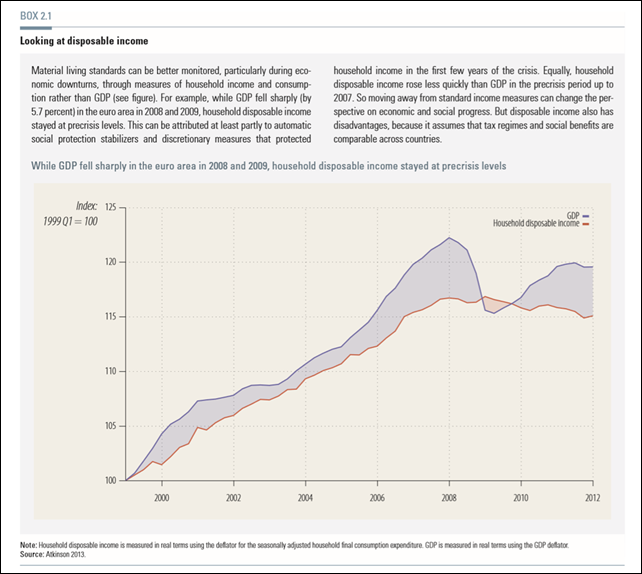Graph of the Day: Global GDP and household disposable income, 1999-2012
(UNDP) – Material living standards can be better monitored, particularly during economic downturns, through measures of household income and consumption rather than GDP (see figure). For example, while GDP fell sharply (by 5.7 percent) in the euro area in 2008 and 2009, household disposable income stayed at precrisis levels. This can be attributed at least partly to automatic social protection stabilizers and discretionary measures that protected household income in the first few years of the crisis. Equally, household disposable income rose less quickly than GDP in the precrisis period up to 2007. So moving away from standard income measures can change the perspective on economic and social progress. But disposable income also has disadvantages, because it assumes that tax regimes and social benefits are comparable across countries.
